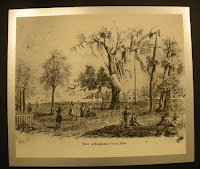Within the first two decades of the 1800s, two distinct settlements had grown in present-day Hillsboroough County -- the Cuban settlement of Spanishtown Creek, near today's Hyde Park, and the Seminole village of Thlonotosassa , on the shore of Lake Florida to the United States
National and international attention shifted to Florida United States would fight three wars against the Seminoles, with the last one (1855-1858) ending with the deportation of all but approximately 300 Seminoles from the state to the Indian Territory in Oklahoma Florida
As a result of early fighting between the Seminoles and white settlers, the American government established a series of forts throughout Florida
One of these, Fort Brooke , is now the nucleus of modern Tampa Fort Brooke Future U. S. President Zachery Taylor, a general during the war, served at Fort Brooke
Within a few years of its founding, a small village sprang from the northern boundary of the fort. The first post office (1831) officially named the village
The first town plots were laid out in the 1830s by Judge Augustus Steele, but these were invalidated by the US government because they included Fort Brooke Hillsborough County Tampa Tampa



No comments:
Post a Comment